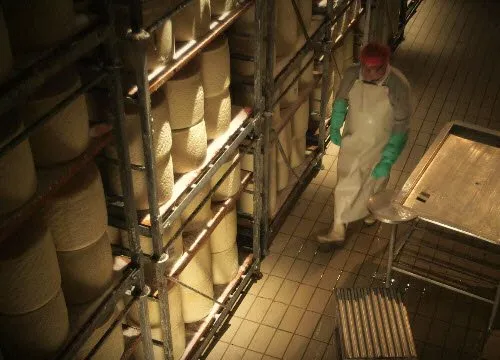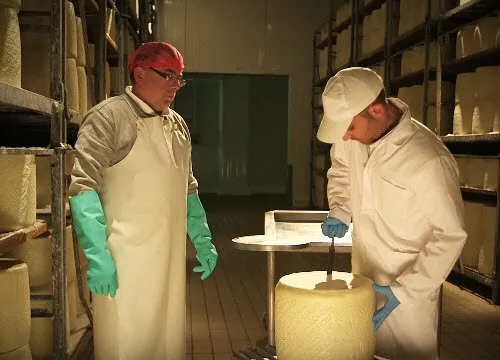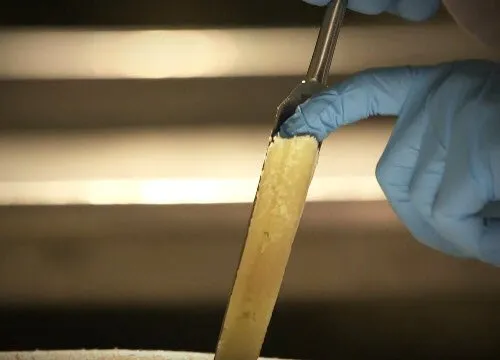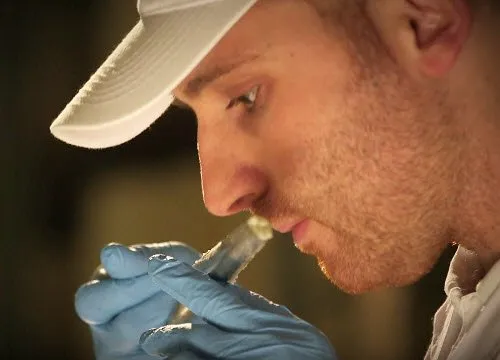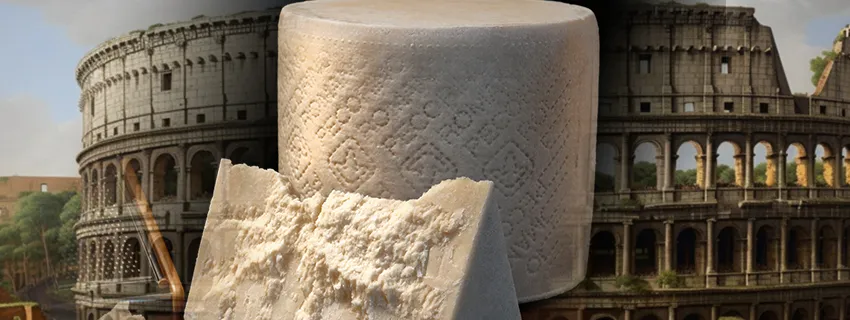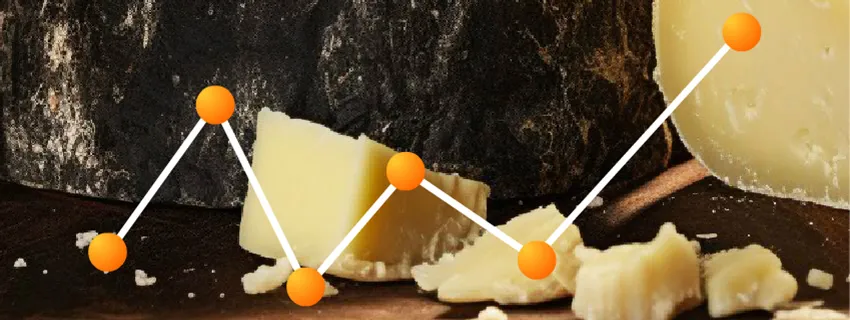Published:
Author: Antonio Maria Guerra
How Is Pecorino Cheese Made?

In this article we will find out how Pecorino cheese is made: from the milk of its sheeps, up to its maturation. A procedure whose origins belong to a distant past, handed down for generations and used still today by the most traditional producers of this great cheese, gathered in the Consortium. Enjoy the reading!

How is Pecorino cheese made?
Here follows a list of the main steps for the production of Pecorino Romano (click here for a printable infographic):
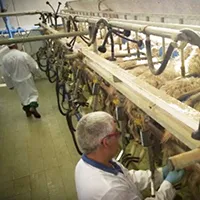
01. Once filtered, fresh sheep’s milk (whole) is processed raw or heated at a temperature up to 68°C for a maximum of 15 minutes.

02. The milk is poured into special ‘coagulation tanks’. Natural lactic ferments are added: this step is known as ‘scotta innesto’ and deeply characterizes the production of Pecorino Romano.

03. Lamb rennet is then added. At a temperature between 38°C and 40°C, this rennet causes the coagulation of the milk and the formation of the ‘curd’ (‘cagliata’).

04. Once hardened, the curd is broken into small fragments (generally not larger than a grain of wheat) and cooked at a temperature of about 50°C thus creating a paste.

05. The paste is drained, cut into blocks, pressed and inserted into special molds where it is cooled. It’s then put to rest.

06. The wheels, once marked and salted, are ready for seasoning: this lasts at least 5 months.
Let’s find out the fascinating origins of Pecorino Romano cheese, as well as a large number of information and interesting facts. To read the article, please click on this LINK.
How is Pecorino Romano cheese made? Printable infographic.
Click HERE to view (and, eventually, download) a printable infographic showing the steps necessary to produce Pecorino Romano cheese.

The wheels of Pecorino Romano cheese.
Pecorino Romano is marketed in wheels. Their average dimensions are:
Read more
- Height: between 24 and 40 cms.
- Diameter: between 25 and 35 cms.
- Weight between 20 and 35 kilos.
The mark of origin, depicting the stylized image of a sheep’s head, is engraved along the entire edge (the ‘scalzo’).
Pecorino Rcheese: calories and nutritional values.
The nutritional qualities of Pecorino Romano are well known since Roman time, when rations of this exquisite cheese were assigned to legionaries engaged in military campaigns for the Empire. 100 grams contain 387 calories, 32 grams of protein, 27 grams of fat, 3.60 grams of carbohydrates and water.

Pecorino cheese cream.
‘Pecorino cream’ is a delicious specialty preparation based on pecorino cheese, characterized by a strong flavor. It can be used as a sauce or as a dressing to garnish, for example, croutons. There are several variations of its recipe: one of these involves melting butter slowly in a saucepan and mixing it gently, adding flour, a little ground pepper, salt and, of course, grated Pecorino cheese.

Pecorino: the wine.
Perhaps not everyone knows that ‘Pecorino’ is not only the name of an exquisite cheese made with sheep’s milk but also that of a white grape variety cultivated in the Italian Regions of Abruzzo, Marche, Umbria and Lazio. Its grapes are used, among other things, in the production of a wine bearing the same name, the ‘Pecorino’, and the Offida DOCG.

The right wine for Pecorino Romano cheese.
What’s the best wine to accompany Pecorino Romano? Well, it depends on the seasoning of the cheese. If it’s fresh, a good choice could be a rosé or an aromatic white, for example a Vermentino di Gallura. If it’s aged, the most suitable wine is certainly a full-bodied red that can balance the intense taste of Pecorino. For example a Chianti, a Morellino di Scansano or a Primitivo di Manduria.

The Consortium for the Protection of Pecorino Romano Cheese.
In November 1979 a group of producers from Lazio and Sardinia founded the Consorzio per la Tutela del Formaggio Pecorino Romano. The purpose of this organization is:
1) To supervise the production of this dairy specialty in accordance with the Specification Document;
2) To promote it worldwide;
3) To defend it from any imitation;
Starting from 1996, after the assignment of the PDO mark to Pecorino Romano by the European Union, these responsibilities have only increased.
It should be finally noted that the Consortium’s headquarters are currently located in Macomer, in the province of Nuoro.


Consorzio per la Tutela del Formaggio Pecorino Romano: contacts.
Address: Corso Umberto I, 226
08015 Macomer (Nuoro) -ITALY
Official website: www.pecorinoromano.com
Mail: info@pecorinoromano.com
Tel.: +39 0785 70537
Copyright information.
The images displayed in this page belong to WebFoodCulture and to the Consorzio per la Tutela del Formaggio Pecorino Romano.

